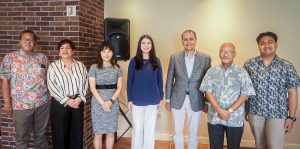‘Getting AIDS treatment depends on where you live’
A recent report indicates that getting AIDS/HIV treatment drugs in the states and territories depends on where a patient is located, owing to the limited funding and significant differences in scope and availability of coverage across the country.
This is despite a 9-percent federal funding increase last year for the AIDS Drug Assistance Programs, or ADAPs.
In fact, the eighth annual National ADAP Monitoring Report said that, despite the ADAP budget increase between fiscal years 2002 and 2003, the increasing number of people living longer with HIV/AIDS, the high costs of HIV medications, and continuing fiscal pressures at the federal and state levels have led some local ADAPs to implement cost-saving measures such as capping enrollment and reducing the number of HIV medications offered.
The annual monitoring survey reportedly revealed a wide variation in the eligibility criteria and drugs offered by ADAPs in the 50 states, the District of Columbia, U.S. territories, and associated jurisdictions.
The report, prepared by the Kaiser Family Foundation, the National Alliance of State and Territorial AIDS Directors and the AIDS Treatment Data Network, said the program serves as “payer of last resort” for prescription medications, meaning that to qualify for the program, individuals must have no other funding source available to them.
ADAPs are a discretionary grant program funded through the Ryan White Comprehensive AIDS Resources Emergency Act, which is administered by the U.S. Department of Health and Human Services.
Since ADAPs are not entitlement programs, funding levels are reportedly not conditioned on the number of people who need prescription drugs or the cost of medications.
Jennifer Kates, Director of HIV Policy, Kaiser Family Foundation, said that “ADAPs continue to be in a difficult situation with the need for HIV/AIDS medications exceeding available resources.”
She said that, while ADAPs play a critical role in the care system for people with HIV, they are often forced to make difficult decisions that may limit access to care for some and “what people get often depends on what state they live in.”
For instance, the report said that eligibility criteria for ADAPs ranges from 125 percent of the Federal Poverty Level in North Carolina (about $11,000 a year income) to 500 percent FPL or higher in Delaware, Massachusetts, New Jersey, and New York.
Meantime, the number of drugs on ADAP formularies range from 18 in Colorado to 474 in New York.
Open formularies are reportedly implemented in Massachusetts, New Hampshire, New Jersey, and the Northern Mariana Islands.
Other states have waiting lists and other cost-containment measures, closed enrollment to new clients, and reduced number of drugs offered.
The report said that only 17 states provide the full set of 14 drugs highly recommended by the Public Health Service/Infectious Disease Society of American Guidelines for the prevention and treatment of opportunistic infections.
Two states—Colorado and Louisiana—do not provide any of these drugs or drugs for other HIV-related conditions, while 33 states provide Fuzeon, the first drug approved by the FDA in a new class of HIV medications.
Statistics showed that in June 2003 alone, more than 85,000 people were served by ADAPs, most of whom were low-income and minority Americans.
Each year, some 136,000 people receive services from ADAPs, representing about 30 percent of people estimated to be living with HIV/AIDS in the U.S.
The majority of ADAP clients are low-income, people of color, male, and uninsured.
The report said that eight in ten (81 percent) have incomes at or below 200 percent of FPL, including about half (49 percent) falling at or below 100 percent of FPL.
The majority are people of color, with African Americans representing a third (33 percent), Hispanics one-quarter (25 percent), and Asian/Pacific Islanders, Alaskan Native and American Indians combined representing approximately 2 percent.
More than three-quarters (79 percent) of ADAP clients are men and six in 10 were between the ages of 25 and 44.
The U.S. Centers for Disease Control and Prevention estimates that there are some 850,000 to 950,000 people living with HIV/AIDS in the U.S., and more the 380,000 are estimated to be living with AIDS, the most advanced form of HIV disease.
Each year, it estimates that some 40,000 new HIV infections occur in the U.S.
Data used in the report were from June 2003 and FY 2003.
The Kaiser Family Foundation is a non-profit, private operating foundation that provides information and analysis on health care issues to policymakers, the media, the health care community, and the general public.
The foundation is reportedly not associated with Kaiser Permanente or Kaiser Industries.






